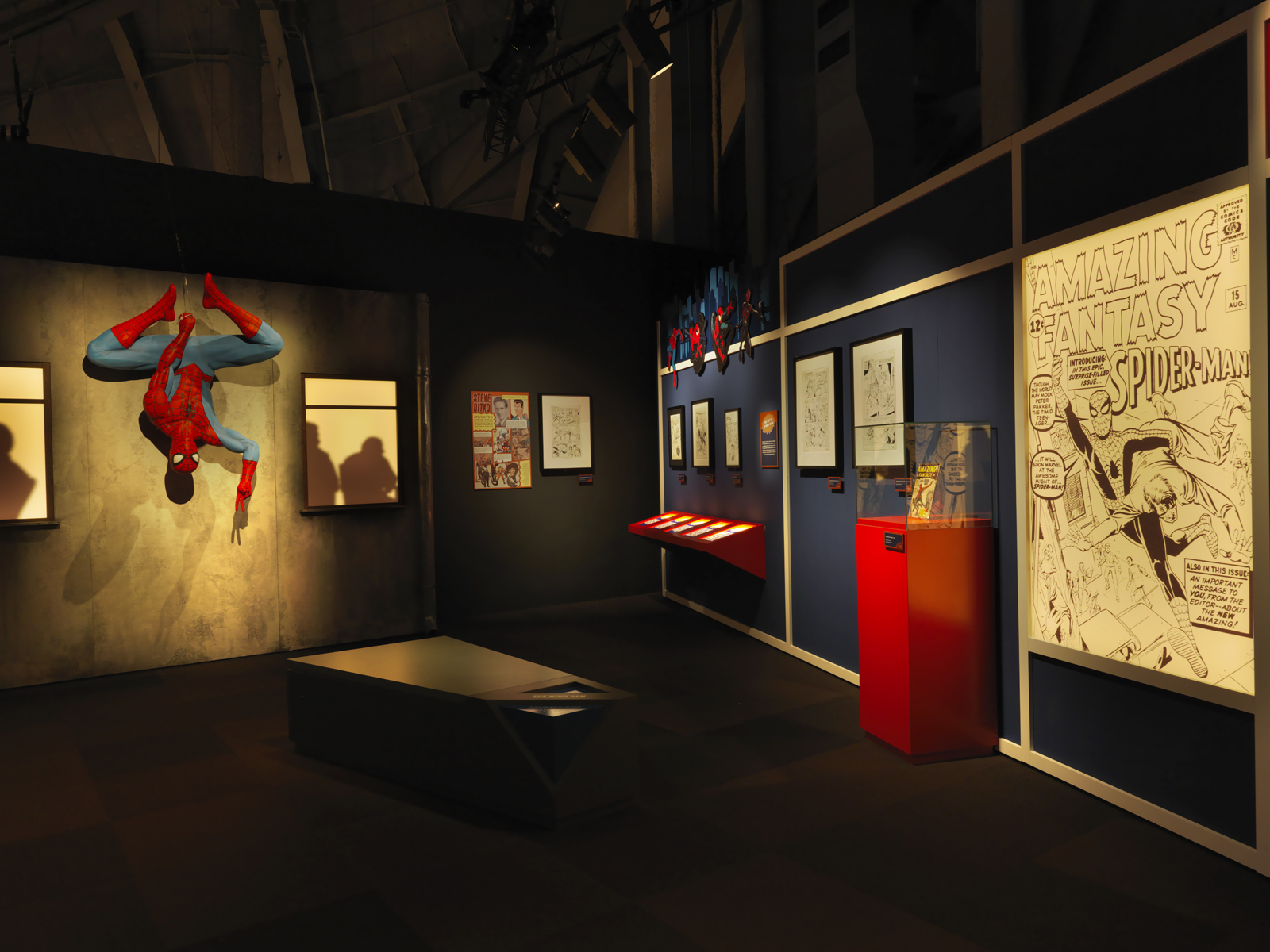CHICAGO — A new exhibition opening at Chicago’s Museum of Science and Industry called Marvel: Universe of Super Heroes explores the Marvel Cinematic Universe’s evolution alongside society over the past 80 years. The collaboration between the museum and the genre makes sense, says Blair Davis, an associate professor of media and cinema studies at DePaul University, who was asked to participate as an expert in the exhibition’s opening event.
“The stories featured in Marvel comics are frequently related to science and technology, especially in the origin stories of many characters,” says Davis, a comic book, pop culture and Marvel researcher. In this Q&A, Davis explores the Marvel universe’s themes of social change and the human body, and what’s next for the genre.
How do Marvel comics intersect with science and technology?
The medium of comics has a long history of technological change, with new publishing formats emerging throughout different eras. Comic books have shifted from being produced solely as print publications to now being created and read both digitally as well as on paper. In turn, the MSI exhibition shows how comic books are physically made as a way of displaying the production process behind this popular art form.
Additionally, science comes into play with Marvel characters through what I describe in my book “Comic Book Movies” as the myth of the “accidental hero.” Heroes like Spider-Man, The Fantastic Four and the Hulk gain their fantastic powers through freak occurrences, be it a radioactive spider-bite or an errant atomic blast. In each case, the accident turns an ordinary citizen into a mighty hero, which means that anyone might possibly become a superhero thanks to a fortuitous technological mishap. I see this as an updating of the “Frankenstein myth,” which centers on the perils and potentials of science and technology. Because of this, superheroes can offer us a new forum through which to explore the effects of science on humanity.
From the perspective of a researcher, how do Marvel comics reflect the social issues of our time?
Marvel movies regularly center on larger issues of social change and the human body. The dystopian themes of films like “X-Men: Days of Future Past” and “Avengers: Endgame” parallel the political divisions seen in numerous countries in recent years. Movie villains like Ultron and Thanos offer us new profiles through which to understand terrorism, while a complex character like Killmonger, as portrayed by Michael B. Jordan in “Black Panther,” forces us to reconsider the philosophical underpinnings of his seeming-villainy altogether.
Superheroes also allow us to consider the body in new ways. Characters like Spider-Man, Ant-Man and Captain Marvel are all about bodies that are different. The comic book body becomes capable of things that real-word bodies can’t do, like shrink, fly or transform. If superheroes embody our greatest hopes and values, then that embodiment comes in the form of explicit bodily difference, which allows us to celebrate difference and diversity in very powerful ways.
What else makes Marvel unique and appealing to its fans?
While we typically think of Marvel in terms of superheroes, the comics and their film adaptations have constantly reinvented the genres through which they tell stories. From the start, the Marvel Cinematic Universe has been all about adding different genres to superhero storytelling: “Iron Man” and “Captain America: The First Avenger” as war films; “Thor” as fantasy; “Guardians of the Galaxy” as science fiction; and “Ant-Man” as both a comedy and heist film. The same is true in the comics themselves. In the 1970s, Marvel introduced heroes like Shang-Chi and Iron Fist through the martial arts genre, anti-heroes like Ghost Rider, Blade and Werewolf By Night via the horror genre along with science fiction characters like Star-Lord, Thanos and Gamora. Marvel has always been about more than just superheroes, which allows their stories to move constantly in new, unexpected directions.
How did Marvel adapt to the pandemic? What should fans expect from Marvel this summer and fall?
In February of 2020, I wrote about how that year’s slate of comic book movies was poised to be all about women in an article for Ms. Magazine. Marvel was set to release “Black Widow” and “Eternals,” both helmed by female directors and featuring actors Scarlett Johansson, Gemma Chan and Angelina Jolie in lead roles. But with the pandemic delaying the start of Phase Four of the Marvel Comic Universe, fans eagerly welcomed the debut of Marvel’s expansion into television on Disney+ with “WandaVision” and “The Falcon and the Winter Solder.” These new series allow Marvel to further expand the scope of the stories they tell by extending storylines across multiple media platforms as we await long-delayed films like “Black Widow,” “Eternals” and “Shang Chi and the Legend of the Ten Rings” in the months ahead.
More information about DePaul’s media and cinema studies degree is available on the program’s webpage.
